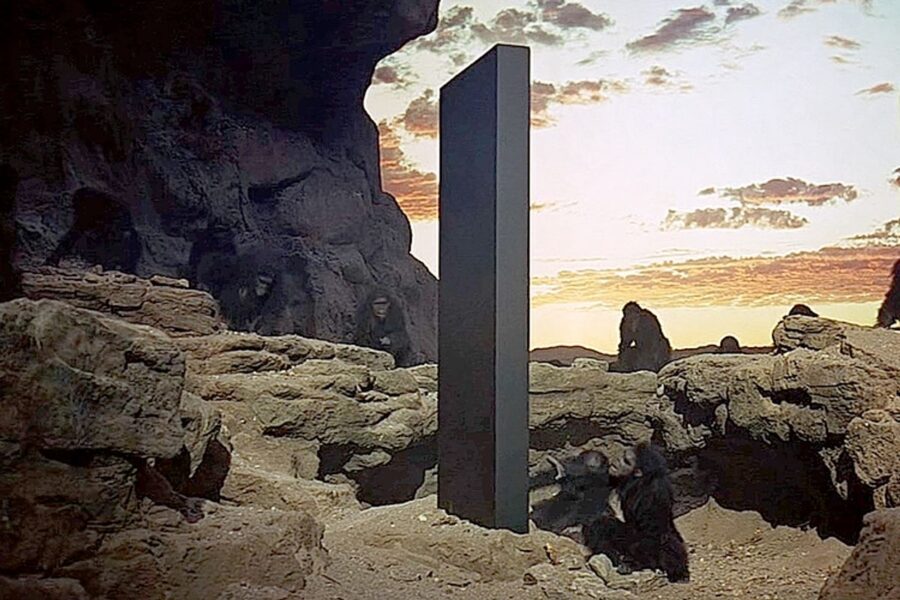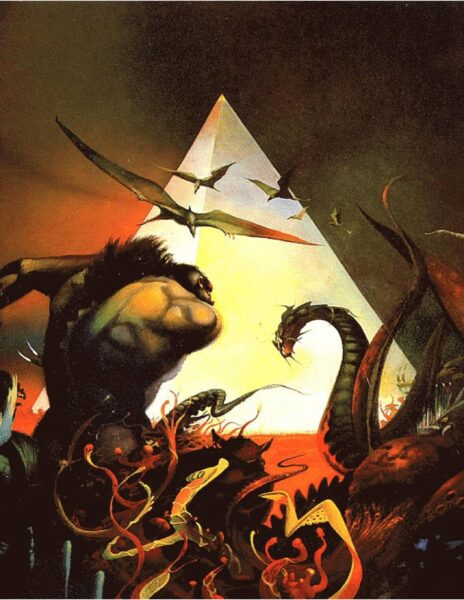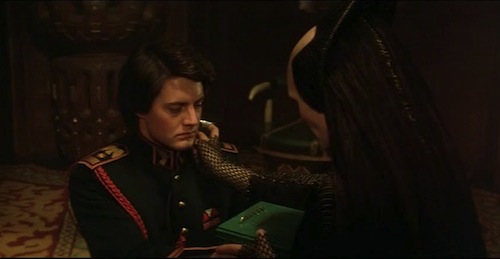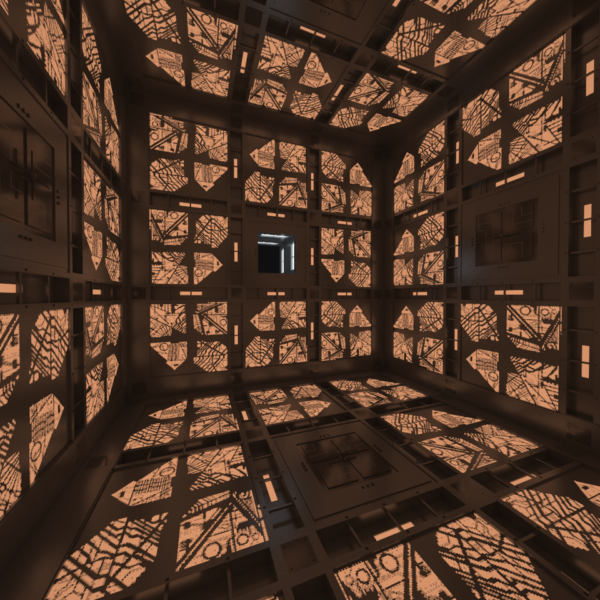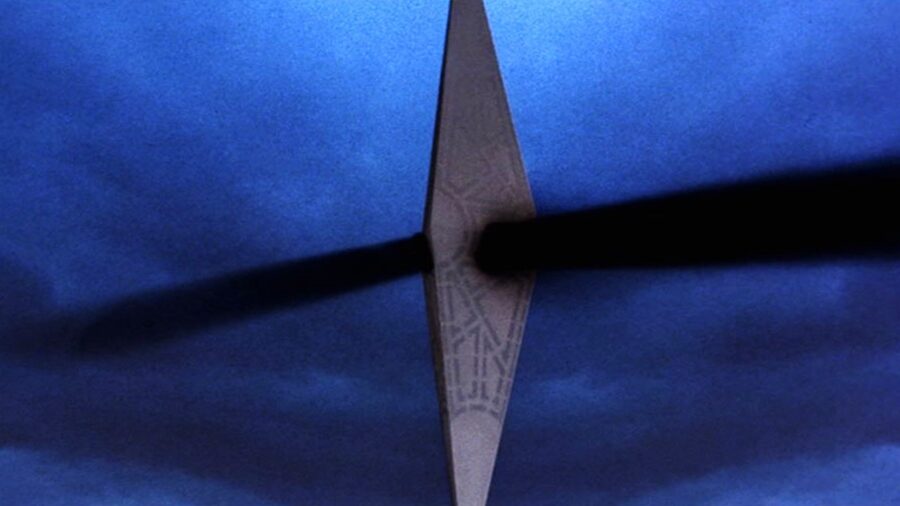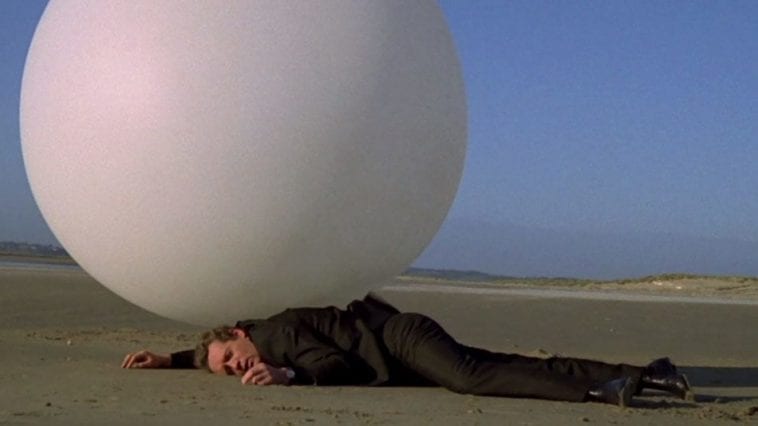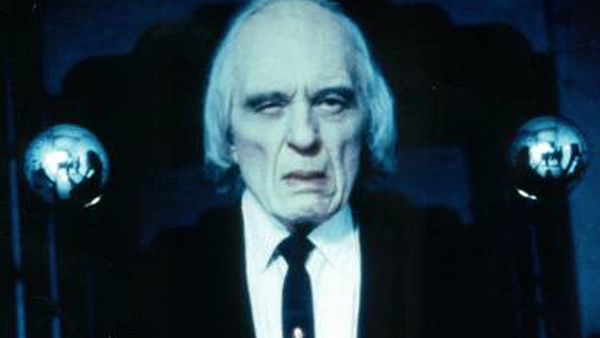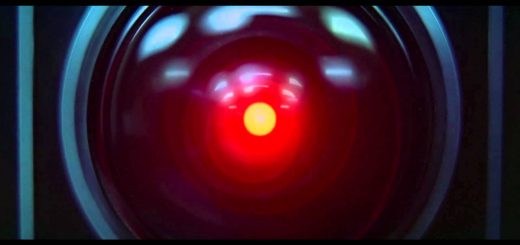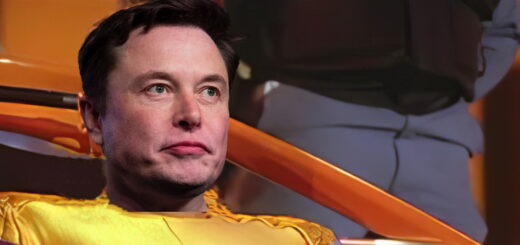Cubes, Spheres and Other Geometric Shapes in Science-Fiction and Horror Movies and Writings
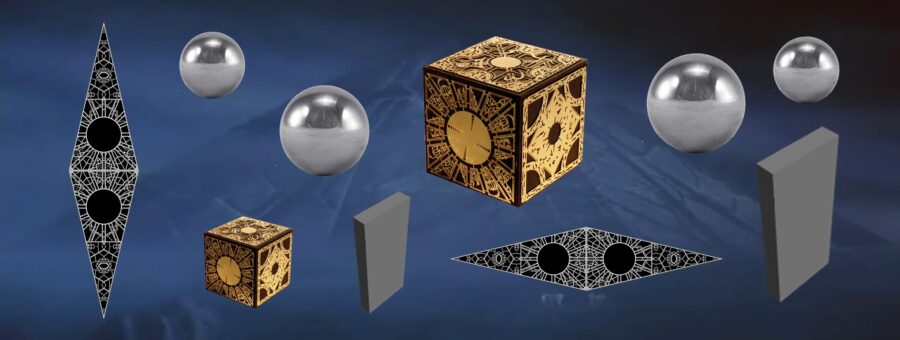
Shôn Ellerton, Feb 15, 2022
Little boxes of nastiness, killer spheres, and ominous pyramids. What more could a work of science-fiction and horror need?
One of my old maths professors once said to us that anybody who can draw freehand a perfect, or near-perfect, circle is a lunatic. Promptly, everyone in the class gave it a go. Not surprisingly, no one managed to do it and the class was deemed clear of lunatics.
But I was thinking this the other day. Perfect shapes like circles, spheres, cubes and, of course, pyramids have captivated mankind since the dawn of civilisation. Perhaps it is because they do not conspicuously turn up in our natural world, except for such regular biologically formed objects like fruit shaped as spheres or beehive cells shaped as hexagons. By and large, if one jumped back to the stone age in a time machine, and had a wander about, coming across a near-perfect sphere or some other platonic solid or a pyramid in the natural world is unlikely. In the rare case of stumbling upon a rock or some other geological or topographical feature which is ‘too perfect’ in shape, we become intrigued, often to the point of suspicious. In the case of early man, it is often said that finding such an anomaly would have been met with a divine kind of reverence or be shunned with aberrant suspicion. The first thought that would come into the mind of modern man is, ‘OK. Who put that thing here?’ or ‘There’s no way that man could have done that. Must be aliens!’
What’s strangely fascinating about coming across perfect geometrical shapes in the most unexpected of circumstances, is how bizarre and oddly sinister they are. Moreover, in the history of man, they are often elevated to objects of worship not to be entangled with. The fear and awe of discovering unnatural perfection in the natural world is a recurring theme and has held a special significance in science fiction, horror, and fantasy. Picture a hypothetical moment in history when African nomads wander across the dark interior of the continent making their way towards the silhouetted outline of one of the great pyramids, long ago abandoned, against a moonlit sky. I doubt that their first impression would be, ‘Hey, check it out, why did someone build that amazing looking pointy thing there? Let’s go and walk to the top of it.’ It’s more likely that they would stare at it with disbelief with only the most intrepid of them to approach it and touch it gingerly. Much like that scene in Stanley Kubrick’s 2001: A Space Odyssey when a large perfectly black rectangular slab-shaped monolith standing on its end was unexpectedly found at the entrance of the cave. In that story, early man was touching it, and in the process of doing so, it transferred hitherto hidden knowledge, like how to use a bone lying around as a hunting item to strike an animal on the head. There were, of course, unintended consequences of learning such useful and ‘secret’ knowledge, in this case, the ability to use that same weapon against each other. Instead of being portrayed in biblical sense as a snake, it is portrayed as this very strange and disconcerting perfect geometrical object in the middle of a rocky desert. Like the snake, such objects are often associated with the taboo and essentially deemed as being sinister.
Monolith in 2001: A Space Odyssey
Pyramids, cubes, and spheres have often been used in the genre of science fiction, fantasy, and horror. Pyramids hold a special power especially when they are large and imposing in the world of literature and films. An example includes a relatively obscure horror sci-fi film called Galaxy of Terror (1981). As corny as the film was, it did feature quite a convincing sinister large pyramid riddled with lots of weird tunnels infested with lots of nasties including a sex-crazed giant worm, I kid you not. Another example is an old early 20th century excellent science-fiction horror book titled The Night Land by William Hope Hodgson. Written in an ornate gothic style it describes a dark hellish landscape in the far future long after the Sun died down. In the style of Milton’s Pandemonium, the darkened landscape is riddled with horrible creatures and places with sinister names like The Watcher of the Northwest, the Place Where the Silent Ones Kill, The Quiet City, The House of Silence, and the Thing That Nods. In this case, it is the vast pyramid hundreds of stories high known as the Great Redoubt where humanity lives in sanctuary. In Pilgrim’s Progress-like fashion, the story tells of a small group set out to traverse the dangerous lands separating them from another similar but smaller sanctuary called The Lesser Redoubt. I’ve not come across another work of fantasy literature that so describes such a dark and sinister place with such clarity. There is a movie itching to be made from this.
The Night Land and the Great Redoubt Pyramid
But what of little pieces of perfect geometry? Cubes and boxes have showcased themselves many times in works of horror fiction. The problem with cubes and boxes is that, by design, they must have something inside of them. That makes them innately suspicious. Any child who tried out a jack-in-a-box for the first time, probably got quite a shock from it. I never liked them, nor did I ever like clowns by the way. And yes, I watched that 1982 film, Poltergeist, in later years feeling much vindicated that clowns are inherently evil. Nobody wants to stick their hands into a box not knowing what’s in it. This was put to good effect in the sci-fi book, Dune, in which the rite of passage to manhood for a prince was to keep his hand in a box on pain of death should he retracted it. The witch who held the box focussed her energy to create the sensation of burning pain in his hand, but she also had a needle armed with deadly poison poised against his body should he concede to the pain and withdraw.
The Box in David Lynch’s version of Dune
One of the most successful and brilliant cult movies in the science-fiction horror genre is Cube (1997), in which half a dozen or so very unfortunate victims wake up to find themselves in a room shaped as a cube. All have varying and often clashing personalities, one of them being seemingly a lunatic and highly autistic. They try to escape but learn that the cube they’re in is only one of a very large number of other cubes interconnected by little portals on each side in which they can crawl to the next one. Much to their horror, many of these cubes have extremely nasty bobby traps, all of them decidedly fatal. What made this low-budget film so mesmerising to watch is the anticipation of finding out if the space in the next cube was safe and if not, what kind of horrible death was to come. To make the film even more interesting, each cube has a sequence of numbers etched into the portal and it dawns on the victims that working out the pattern of numbers is the key in making a decision whether the next cube is safe or not. To complicate matters further, the cubes, from time to time, move about like a Rubik’s Cube. It turns out that the lunatic autistic guy works it out and escapes unscathed. Perhaps he could have drawn that circle!
Inside one of the cubes in the 1997 movie, Cube.
If there is one series of movies which best conveys the horror of cubes, and that is, of course, the Hellraiser movies based on Clive Barker’s works of horror fiction. In a nutshell, the movies are based on over-curious people trying to work out how to open gold-coloured intricately designed palm-sized cubes emblazoned with beautiful geometric patterns. These cubes, after much fumbling and fondling and getting closer to being solved and opened, start to play out a little sweet and innocent sounding music box melody, which just adds to the surreal creepiness. Those trying to solve them are told that by doing so, they will open the portal to another world, and when that happens, Hell literally turns loose. To greet the unfortunate curious, are the Cenobites, a peculiar and sadistic clan of weird looking heavily pierced leather-bound once-human creatures, one of them having a head chequered with pins, the leader by the name of Pinhead. Honestly, they wouldn’t look entirely out of place in a death-metal rock band. In any case, they invite and guide them through their own personal hells, kind of like Virgil did in Dante’s famous work, albeit with the unpleasant difference of being made to experience it as well! To add to the weirdness and mystique of this movie, once the curious adventurers are within the bowels of hell, the cube (known in the story as the LeMarchand or Lament configuration) morphs into the terrifying elongated octahedron (the Leviathan configuration), signifying that they are in Hell Proper, the centre of which is a vast labyrinth overlooked in the centre by a very sinister and large revolving Leviathan issuing rays of black light filling the heads of anyone in its moving arc with nightmarish episodes whilst in its path. This reminded me of the vast icy plain of the ninth circle at the bottom of the huge conical well in Dante’s Inferno in which the evil trilogy of Judas, Brutus and Cassius presides from the centre across the ice-submerged souls of traitors, the worst of the worst kind of people according to Dante.
Artist’s impression of The Leviathan, Lord of the Labyrinth in Hellraiser 2.
On one business trip I took at a mobile-phone company in Texas, one of the guys who worked there, a youngish chap in his early thirties, was the butt of many a joke with his colleagues. His colleagues, taking me to a bar after work, explained to me that he was genuinely frightened of small boxes after watching these Hellraiser movies as a child. Naturally, the prankster element was too much to resist for his nearby desk-neighbours, so the poor chappie, on occasion, found a little cube of some descript lying in wait for him on his desk. In these days of overzealousness of coercing to political correctness and safetyism, there would probably be a full-out enquiry about the ‘offensive’ pranks, no doubt.
Spheres, balls, and orbs are also featured in film and literature as objects of evil and mystery. One very weird and bizarre British TV series called The Prisoner (1967-1968), features a bouncy balloon which skates across the flat wide beach capturing prisoners who attempt to escape from a very strange town (filmed in the beautiful Italianesque town of Portmeirion in Wales) in which political prisoners are kept under the watchful eye of Number 1. By the way, remakes of this show are best avoided. Although the notion of being captured by an oversized white balloon is somewhat comical, as a child when I first watched this series, the idea of being caught on a wide open windswept beach running away from an approaching sphere would have seemed kind of scary.
Bouncy ball capturing escapee in The Prisoner
Last but not least, floating orbs have historically been held in high regard from testimonies given by those who’ve seen ghosts or other premonitions. However, when it comes to very fast-moving floating steel balls, again the size of a palm, look no further then the supremely weird and cultish horror series of the Phantasm movies. Featuring the Tall Man, an elderly character who was once a kindly scientist, opened a portal that traversed time and space and somehow became evil. Posing as an undertaker, he exhumed bodies out of graveyards in ‘smalltown’ America, reanimated them, and then reshaped them to hideous-looking midgets to cope with the much stronger gravity of a far-away planet. They were transported there through a pair of ominous electrically humming shiny cylindrical posts and once there, there were used as slave labour. Quite a story, indeed. A couple of curious bystanders got caught up with this at the local mausoleum in which The Tall Man was working at the time, and making the mistake of crossing his path and to discover his dastardly intentions, found themselves on a quest to save the world. This involved dodging and weaving the Tall Man who had a very unusual arsenal of floating steel spheres, injected with some sort of organic brain matter, and armed with an assortment of retractable blades, drills, and other nasty pointy things. He used his unearthly powers to control these spheres chasing his victims like guided missiles to dispatch them, often with overly gory but amusing effect. Think of, ‘It’s nothing but a flesh wound’, and you get my drift!
The Tall Man and his trusty Spheres of Death
